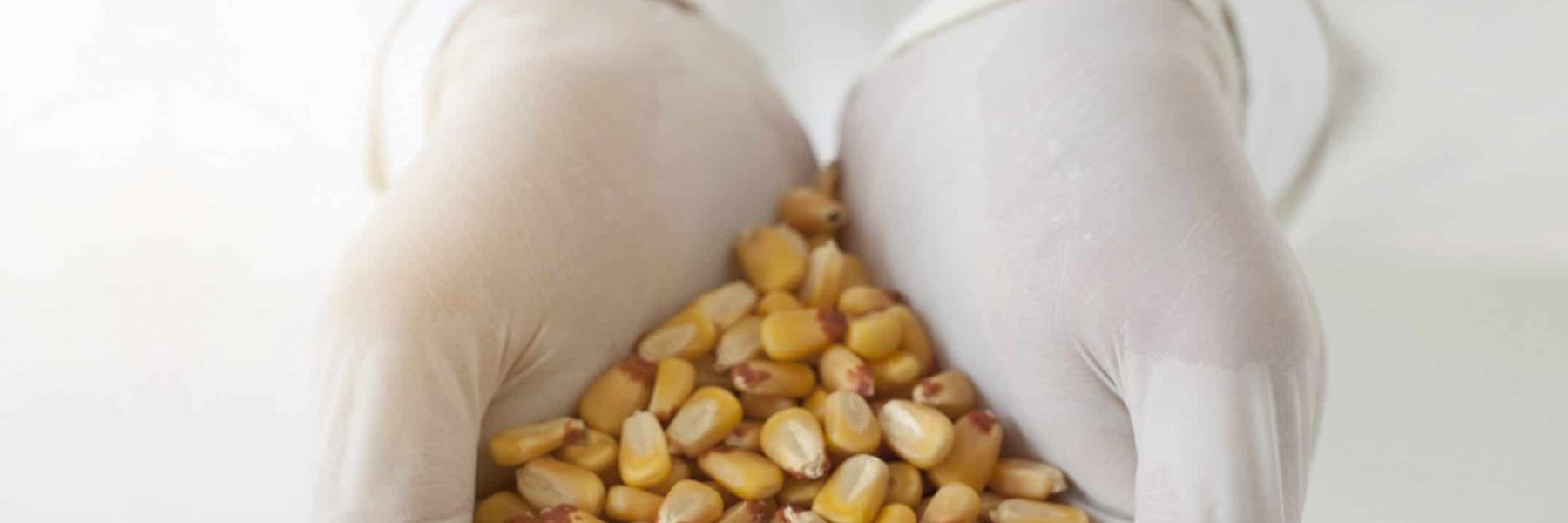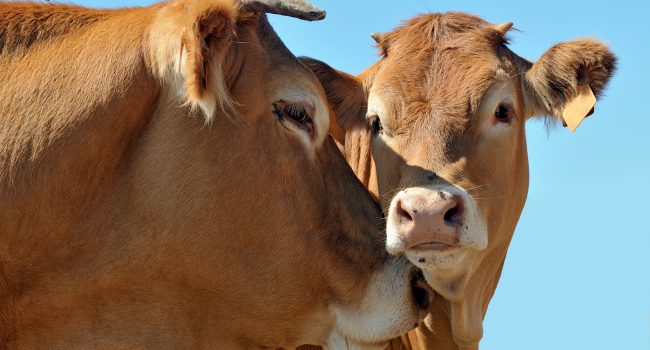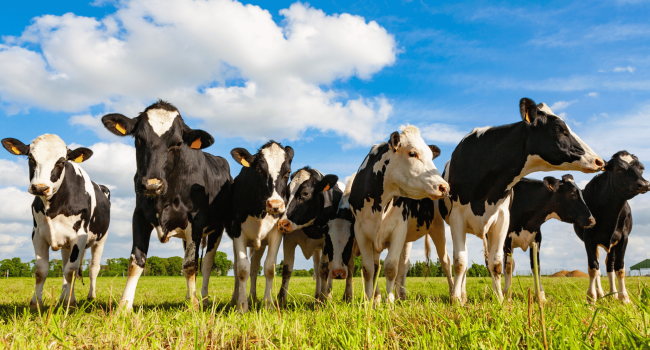Aflatoxins, secondary metabolites of various Aspergillus spp., are highly toxic to animals and can significantly impact poultry zootechnical performances. In order to study the toxins’ effects on animals, but also assess the efficiency of products against Aflatoxins B1 in feed, ADM has developed a specific, rapid and reproducible in vivo model on ducklings.
Aflatoxins are natural contaminants of animal feeds and feed ingredients. These mycotoxins have been known for decades to have strong hepatotoxic and carcinogenic effects and are regulated by law in at least 100 countries (VAN EGMOND et al. 2004). There are various types of aflatoxins. Among them, aflatoxin B1 (AFB1) is the most commonly encountered and is also considered to have a higher toxicity level than other aflatoxins.
The negative effects of aflatoxins on animal health have been significantly studied, allowing their effects on animal performances to be highlighted (YUNUS et al., 2011). Aflatoxins can cause a variety of effects including liver pathology, immunosuppression and changes in relative organ weights (MODIRSANEI et al., 2004).
One aflatoxins mechanism of action is related to the inhibition of protein synthesis by direct interference in RNA and DNA synthesis of information, compromising cell protein synthesis, therefore resulting in systemic damage to animals (RILEY, 2005). Those changes in proteins concentration in hepatic, but also renal tissue, are probably related to structural damage of liver and kidney as a consequence of exposure to aflatoxins.
This reinforces the fact that the liver and the kidney are primary targeted organs for aflatoxins, including significant damaging effects on the metabolic activities and secretory capacities of these organs, such as synthesis of essential amino acids or even coagulation factors in the liver (DHANASEKARAN et al., 2011). A decrease in the concentration of total plasma proteins and in albumin are relevant indicators of the alteration in protein synthesis observed in aflatoxicosis (QUEZADA et al., 2000).
Toxic properties of aflatoxins
The toxic properties of aflatoxins can be different depending on the testing system, animal species, dose and duration of exposure. They have been shown to be lethal to animals and animal cells in culture when administered acutely in sufficiently large doses, and to cause histological changes in animals when smaller doses were administered subacutely. In several animal species, a chronic exposure for extended periods has resulted in tumour induction.
Studies have shown that ducklings are the species most susceptible to acute poisoning by aflatoxins. The LD50 of a one-day-old duckling is 0.3mg/kg body weight, compared to 6.3 for chicken (DHANASEKARAN et al. 2011).
Several approaches have been investigated to reduce the exposure of animals to aflatoxins in contaminated feeds. The addition of sequestering or binding agents to feedstuffs contaminated by aflatoxins is one of the most used worldwide. As stated by SCHEIDELER (1993), the effectiveness of a potential sequestering agent should be measured in vivo following in vitro evaluation.
In fact, in vitro studies aimed at checking the binding capacity of mycotoxins are very useful for a first screening of potential candidates, provided they are made taking the digestive tract environment into account (pH variation for example). However, it is difficult to assume that a product with good efficacy in vitro will definitely perform when fed to intoxicated animals. This is why in vivo tests and models are crucial to objectively evaluate a feed additive’s efficiency.
Model development
The model, developed by ADM, is specific, reproducible and based on the most sensitive animals to mycotoxins: ducklings. This in vivo model is much closer to the field conditions in comparison to an in vitro model in a laboratory. It consists in administrating different kinds of additives to ducklings exposed to aflatoxins.
The physiological and zootechnical parameters of these ducklings are compared to ducklings not exposed to mycotoxins and ducklings exposed to mycotoxins without any treatment. The measurement of specific physiological parameters allows earlier intoxication detection than the measurement of zootechnical parameters.
In a preliminary study, a basal diet (standard duckling feed formula in mash form) was manufactured from aflatoxin-free raw materials. This basal diet remained as a negative control diet. Pure synthetic aflatoxin B1 (Sigma-Aldrich) was added to the basal diet to manufacture the different contaminated diets, to achieve theoretical contamination levels of 50, 125, 250 and 500ppb. Some 240 day-old male Pekin ducklings were housed in 10 wired cages (two replicates of 24 birds for each diet) and fed from day 1 to day 21.
Ducks were observed twice a day and the mortality was recorded. Birds were individually weighed at days 7, 14 and 21. Feed intake per cage was also recorded.
At day 21, all the animals were slaughtered. Blood parameters were analysed (cholesterol, protein plasmatic rate, albumin) as intoxication biomarkers (RAUBER & al., 2007). The slaughtered animals were dissected. Hearts and livers were individually collected and weighed. Weights were expressed as a percentage of body weight, thus obtaining the relative weight of organs.
The aflatoxin B1 diet content was analysed (UpScience laboratory, France) and revealed 6, 92, 183 and 367ppb of aflatoxin B1 respectively. A significant (p<0.05) decrease in body weights and feed intake was observed at all ages at 367ppb of aflatoxin (highest dose).
Relative weights increased significantly (p<0.001) for the heart at day 14 and day 21 at 92ppb, the spleen at day 7, day 14 and day 21 at the highest dose, the proventriculus at day 14 and day 21 at the highest dose and the gizzard at day 21 at the highest dose. Liver relative weight was not significantly affected. Regarding blood parameters, they change very rapidly due to the reduction of the liver function, particularly inhibition of synthesis of protein and impairment of lipidic metabolism by the aflatoxins. At day 21, total plasmatic protein and albumin were significantly lowered for every aflatoxin concentration. The total plasmatic cholesterol was significantly lowered only from the level of 92ppb (Fig. 1). Analysis of the data according to the level of aflatoxin B1 ingested allowed the classification of the different parameters studied according to their sensitivity to aflatoxin B1 dose: total blood protein = albumin > spleen/heart relative weight > blood cholesterol > live weight = feed intake > proventriculus relative weight > gizzard relative weight. It was thus concluded that the plasmatic parameters (total blood proteins, albumin and to lower extent cholesterol) were valuable indicators to study the possible prevention of the toxic effects of aflatoxin by toxin binders.
Plasmatic protein rates proved to be significantly decreased since contamination as low as 26ppb, but have also lower individual variation in between ducks. Moreover, they were positively correlated to other plasmatic parameters (TP/albumin: r=0.98 and TP/cholesterol: r=0.9). As a consequence, the plasmatic protein rate was retained as the intoxication biomarker for further studies.
The contamination level about 92ppb of aflatoxin was also validated as the reference for the contaminated control. This allows us to observe the physiological effect (plasmatic protein rate) but also the zootechnical effect on animal performances, whereas a lower dose would provoke only physiological effects on a short-term period.
Even though this contamination could be considered as low compared to levels tested in some in vivo trials and to levels sometimes found in naturally contaminated raw materials, this dose was chosen as the best compromise between animal welfare, economics and the sensitivity of the protocol. At this dose, 10 days exposure was long enough to observe the aflatoxin effect.
On the one hand, the model was validated by 18 studies on the effect of aflatoxin contamination level on animals (673 Pekin ducklings aged one day, mean trial duration of 15.4 days, comparison of a mycotoxin free feed with diet contaminated with aflatoxin B1, mean of plasmatic protein rate variation of 30.7 for non-contaminated group and 22.2 for contaminated group – between 95 to 100ppb of aflatoxin B1).
On the other hand, there were 24 studies on the effect of binder products (2066 Pekin ducklings aged one day, mean trial duration of 14 days, comparison of a control diet and contaminated diet by aflatoxin B1 with or with binder product). The latest trial run in 2018 is described and analysed below.
Material & methods
A standard duckling diet was manufactured from aflatoxin-free raw materials (in mash form) and remained as the non-contaminated control in the study. Synthetic aflatoxins (Sigma-Aldrich) were first mixed with wheat until a dilution in 1kg of wheat. Contaminated diets were prepared with contaminated wheat in a way to obtain contamination of 90ppb of aflatoxin B1 for all the contaminated diets.
Some 320 one-day-old male Pekin ducklings were housed in 32 cages in order to test 10 different diets, detailed in Table 1 (32 ducklings per diet and 3 repetitions per diet), fed from day 1 to day 15. All the commercial products tested are binding products based on bentonites
Birds were individually weighed at day 0 and 15. Feed intake per cage was also recorded.
At day 15, they were slaughtered. The plasmatic protein rate was analysed as the selected biomarker of the model. The slaughtered animals were dissected in order to evaluate the liver colouration.
Results
Weight gain
Fig. 2 highlights that the contamination challenge had an effect on the growth of the animals, the weight gain being significantly reduced by 21.4% (p<0.001) for the animals having consumed the contaminated feed (diet B) in comparison with the noncontaminated control (diet A).
Among the tested products, T5X, as well as the Commercial Products 1 and 2 (CP1 & CP2), allows good growth performance, not significantly different from the noncontaminated control group (p<0.001). Other products (CP3, CP4, CP5), on the contrary, do not restore growth performance. The increase of the Commercial Product 5 (CP5) dosages had no significant effect on duckling growth.
Plasmatic proteins
The detrimental effect of aflatoxin B1 is clearly seen in the significant reduction of total plasmatic proteins rate. The challenge was also significantly efficient here: -55.1% of plasma proteins for the contaminated lot (diet B) (p-value<0.001).
Even if all the tested products did not come back to the level of the non-contaminated control, T5X was able to significantly improve the plasma protein content compared to the contaminated control group (+ 57%), as shown in Table 2. Considering the three lots of Commercial Product 5 (CP5): the rates of 0.5 and 1.0kg/ton are not sufficient to improve the plasma protein level. At the dosage of 2.0kg/ton, a significant improvement of this parameter can be observed.
Plasmatic proteins of the different groups at day 15
Synthesis at 15 days
Whether in terms of growth parameter or plasma protein content, the same hierarchy between the tested products is observed, illustrated by Fig. 3. Apart from Commercial Product 5 (CP5), for which a positive effect is observed on the plasma protein content when it is incorporated at the highest dose, there is no improvement in growth, regardless of the dose applied. T5X gives better results for both the studied parameters (weight gain and plasmatic protein levels).
Conclusion
The in vivo ducklings model, based on the modification of physiological but also zootechnical parameters, allows the impact of aflatoxins B1 on the animals to be evaluated and also to assess the efficiency of toxin binders. The model requires low levels of toxins (realistic doses), low numbers of animals and a short time of exposure. It is sensitive and reproducible and enables potent or inefficient aflatoxin binders to be rapidly and economically differentiated.
Regarding the last trial presented here, the contamination challenge is well validated, with a 21.4% decrease in weight gain and 55.1% in plasma protein content between the noncontaminated and contaminated controls (p<0.001). This test confirms the positive results allowed by T5X, either in terms of growth or blood constant: the results obtained are the best among all the products tested.


